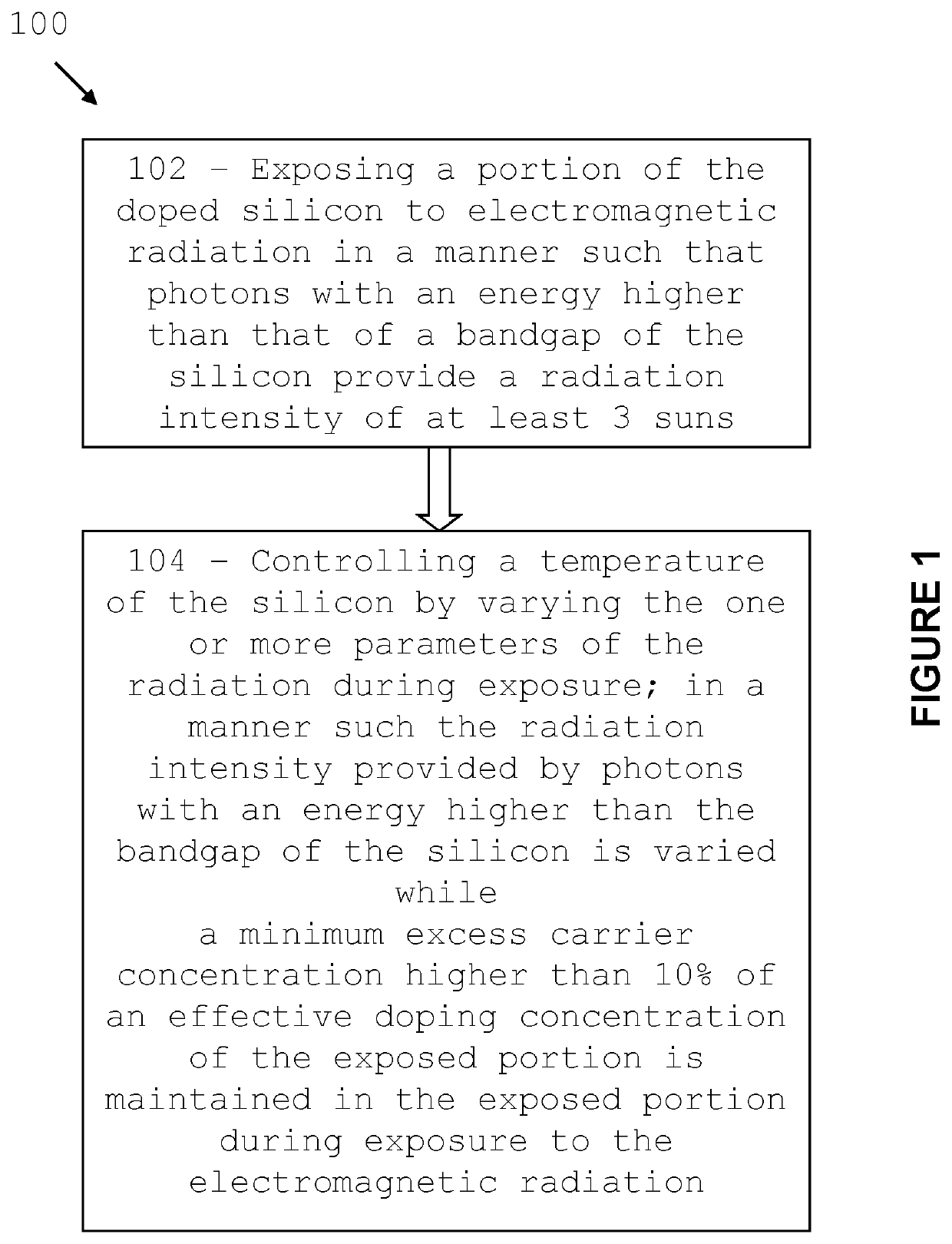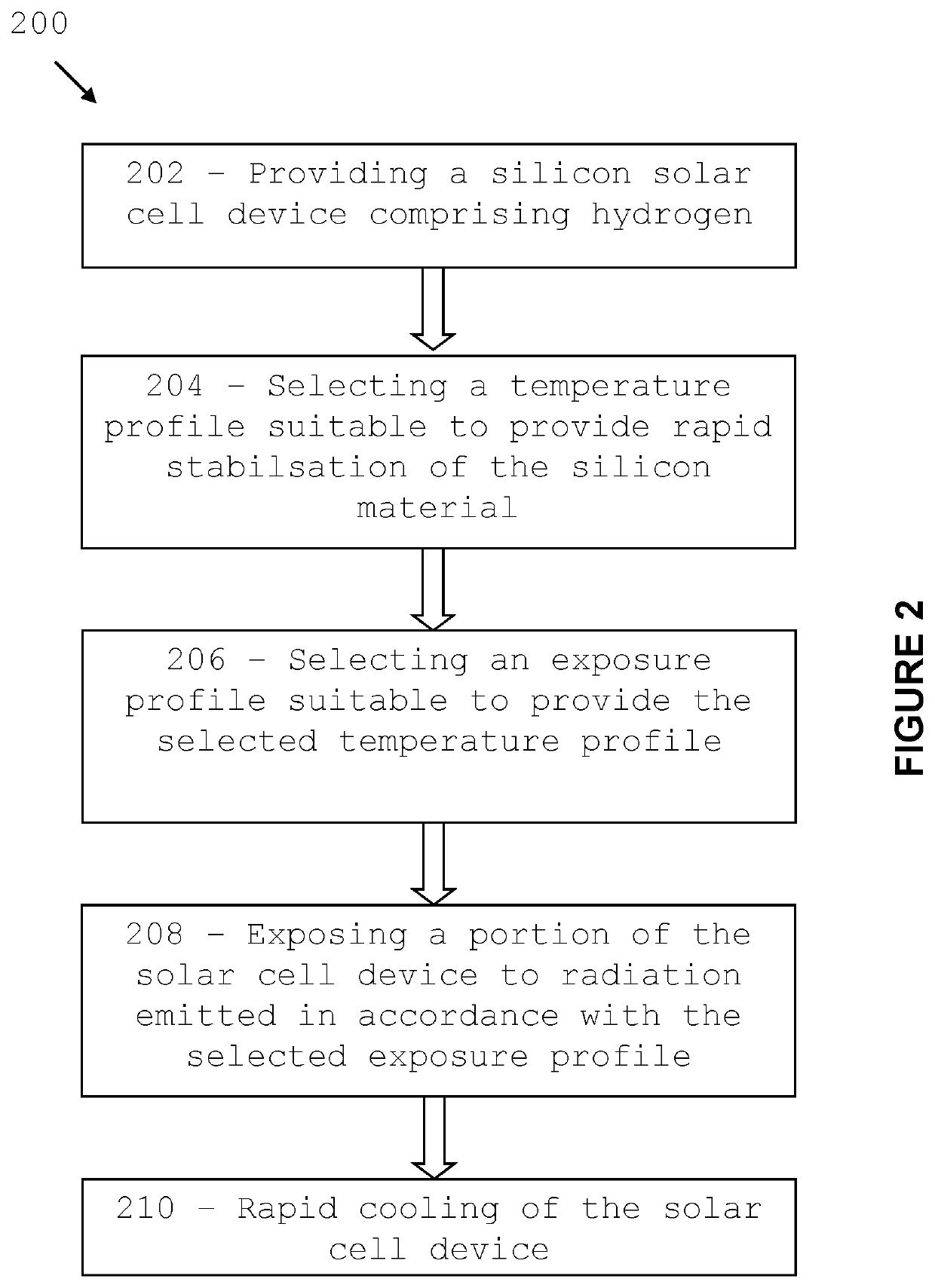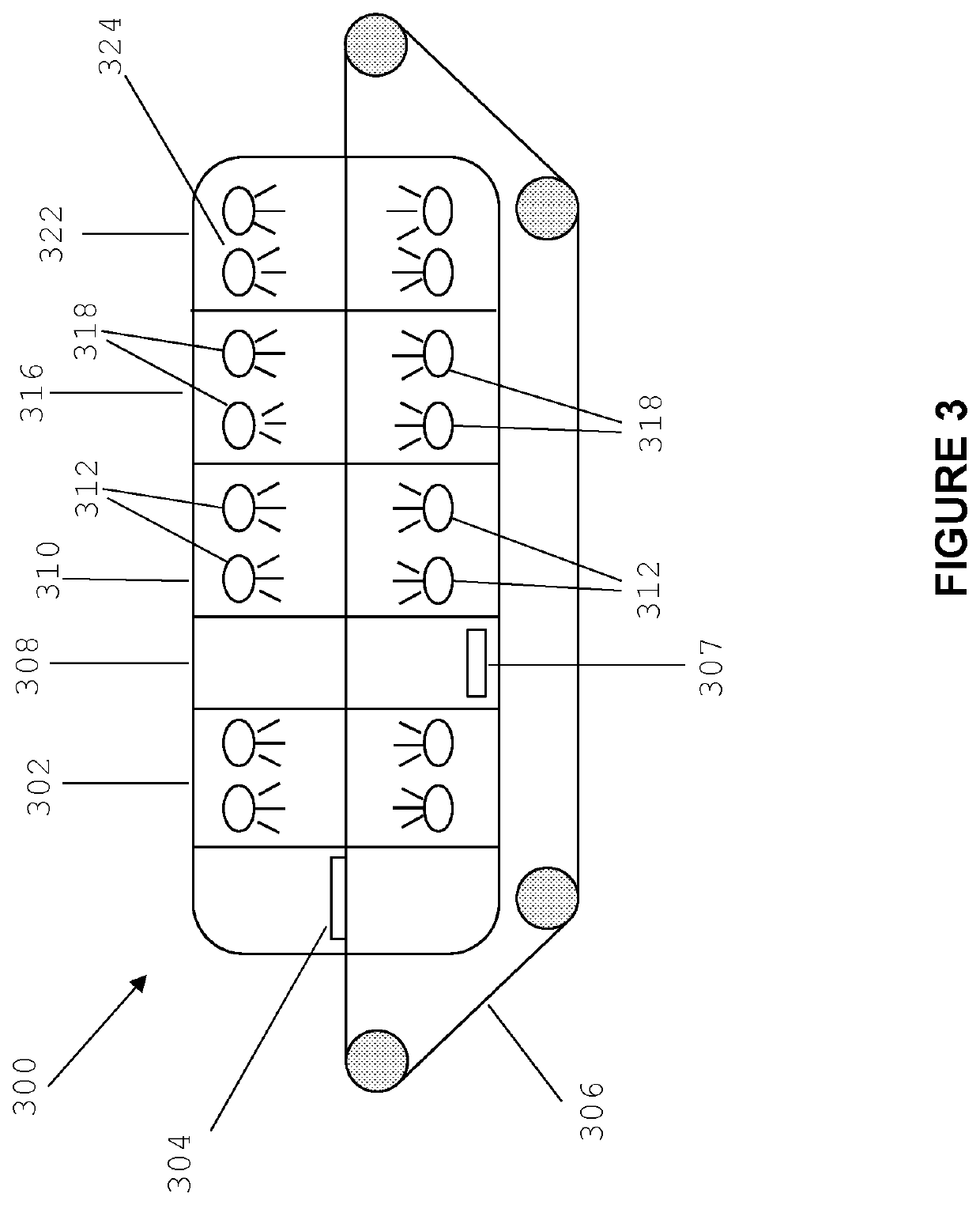Method for processing silicon material
a technology of silicon material and processing method, which is applied in the field of treating a semiconductor material, can solve the problems of complexes that can form electrically active defects, reduce performance, and only apply techniques to defects already present in silicon, and achieve rapid stabilisation of the bulk life of silicon material, improved structure performance, and high injection of majority carriers
- Summary
- Abstract
- Description
- Claims
- Application Information
AI Technical Summary
Benefits of technology
Problems solved by technology
Method used
Image
Examples
Embodiment Construction
[0068]Embodiments of the present invention relate to a method for rapidly stabilising the lifetime of minority carrier in doped silicon material by a deliberate and accelerated formation of electrically active defects and passivation of the defects. The silicon material is exposed to a high intensity radiation. The radiation is absorbed in the silicon material and generates excess minority and majority carriers. In addition, the radiation provides thermal energy to control the temperature of the silicon during the stabilisation process.
[0069]The exposure to high intensity radiation and the temperature regimes provided in accordance to embodiments of the invention allow the rapid formation and passivation of electrically defects related to the boron-oxygen complex. A portion of these defects typically has not formed yet when the fabrication of the solar cell is completed. These defects may form when the solar cell is operating in the field—light induced degradation (LID)—causing a dr...
PUM
 Login to View More
Login to View More Abstract
Description
Claims
Application Information
 Login to View More
Login to View More - R&D
- Intellectual Property
- Life Sciences
- Materials
- Tech Scout
- Unparalleled Data Quality
- Higher Quality Content
- 60% Fewer Hallucinations
Browse by: Latest US Patents, China's latest patents, Technical Efficacy Thesaurus, Application Domain, Technology Topic, Popular Technical Reports.
© 2025 PatSnap. All rights reserved.Legal|Privacy policy|Modern Slavery Act Transparency Statement|Sitemap|About US| Contact US: help@patsnap.com



